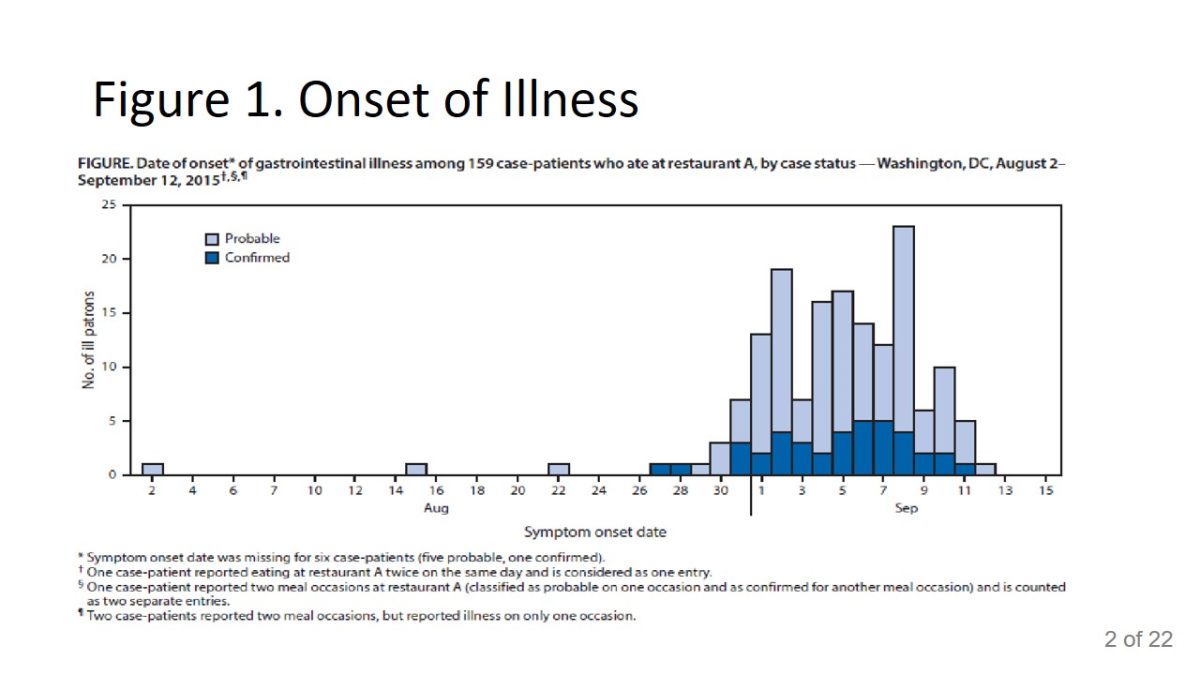
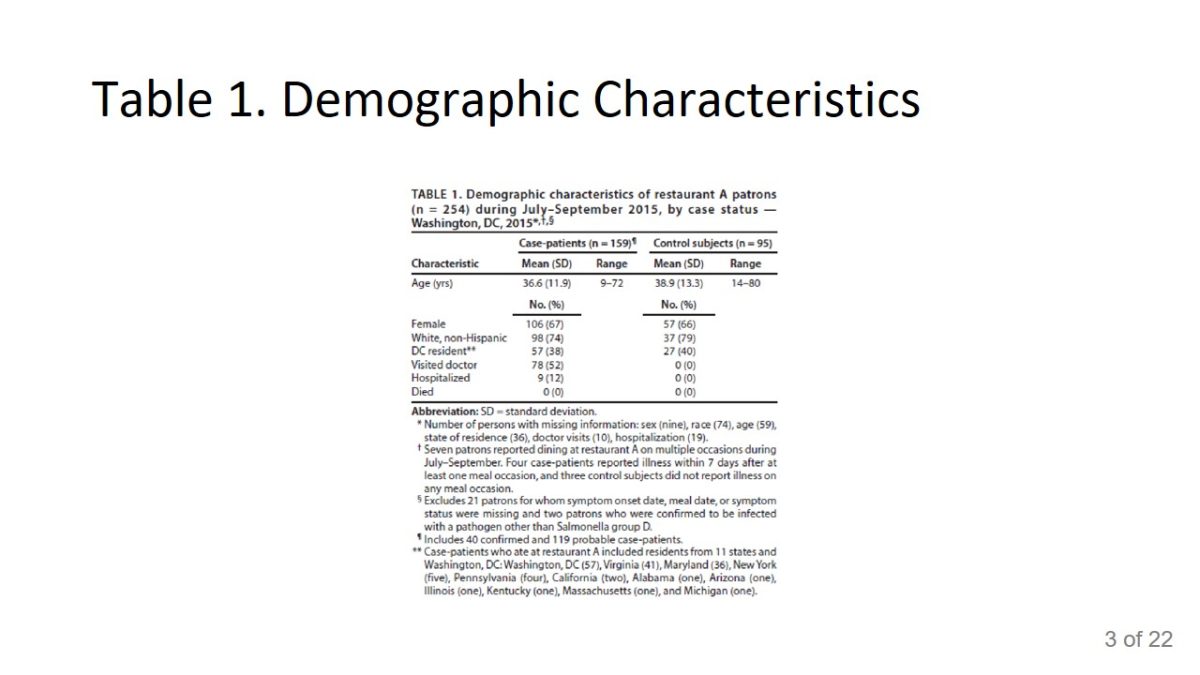
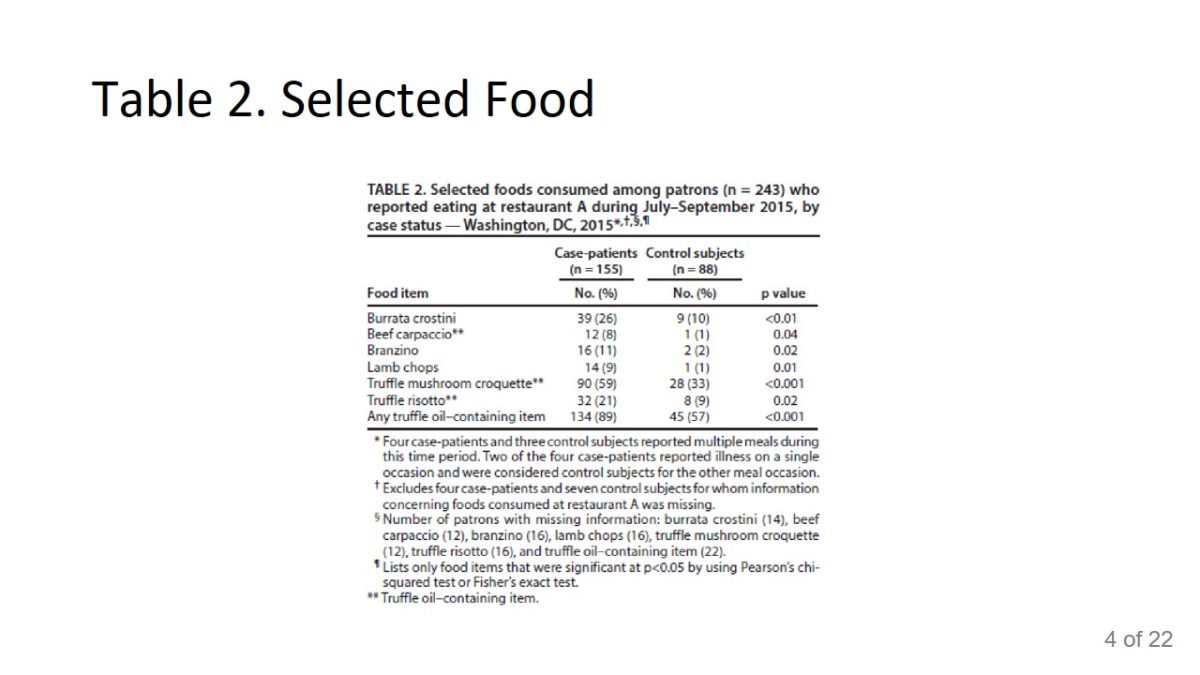
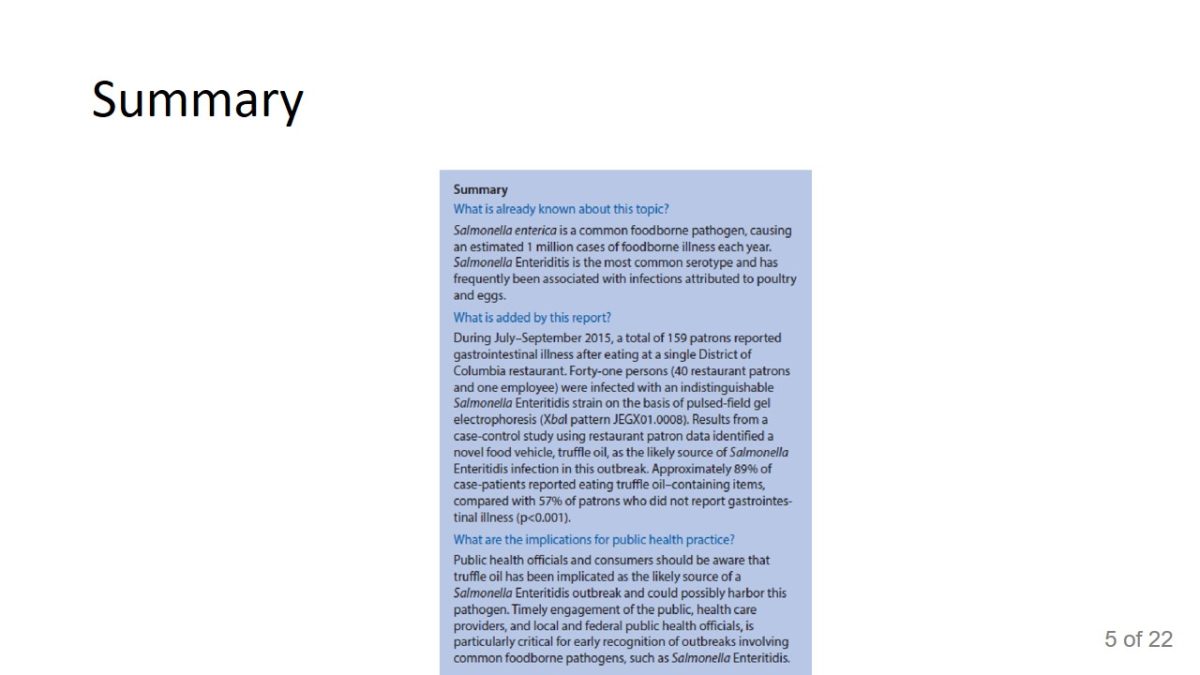
Background
- Creating safe environment for population is essential;
- Therefore, the representatives of the services in question must strive to identify the existing threats efficiently;
- The sanitation-related concerns and the exposure of the target population to the threat of contracting diseases require proper attention;
- The recent notorious case in the District of Columbia (DC) shows that preventing epidemics is a crucial goal.
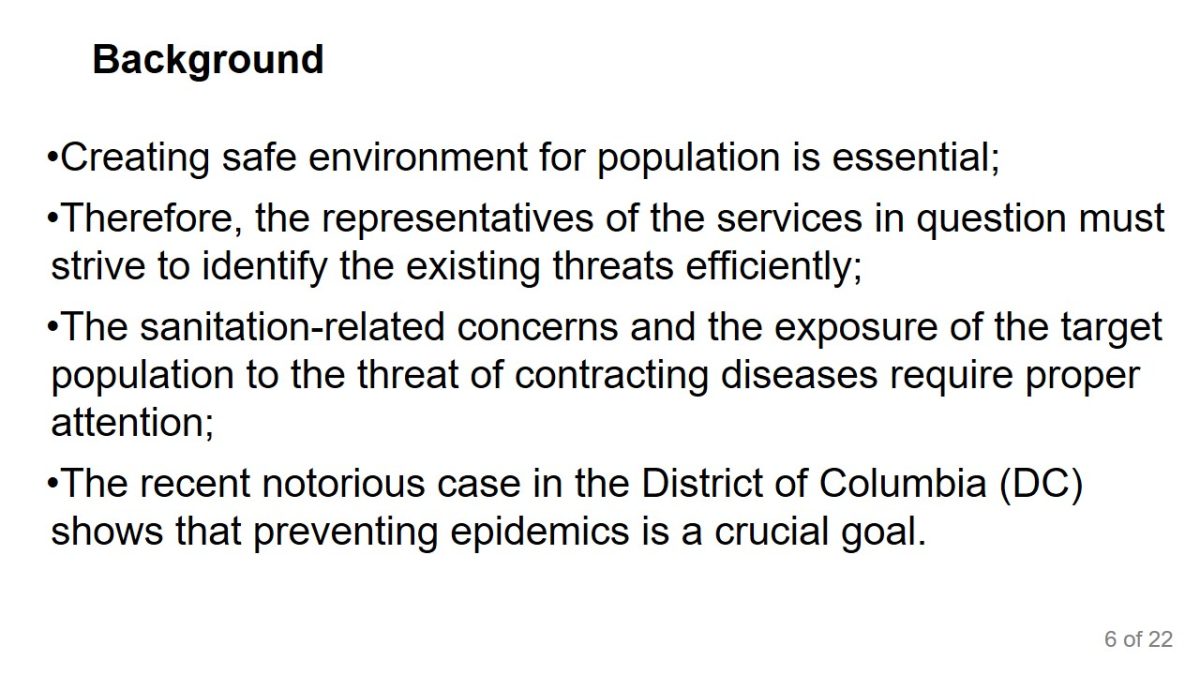
Goals
- The issue of epidemics prevention will be explored by summarizing the article by Kuramoto-Crawford et al. (289);
- A concise summary of the case, the investigation, and the key findings will be represented;
- A detailed analysis of the subject matter will help shed light on the reasons for the problem to occur;
- Thus, the prerequisites for improving the quality of services and maintaining health safety will be created.
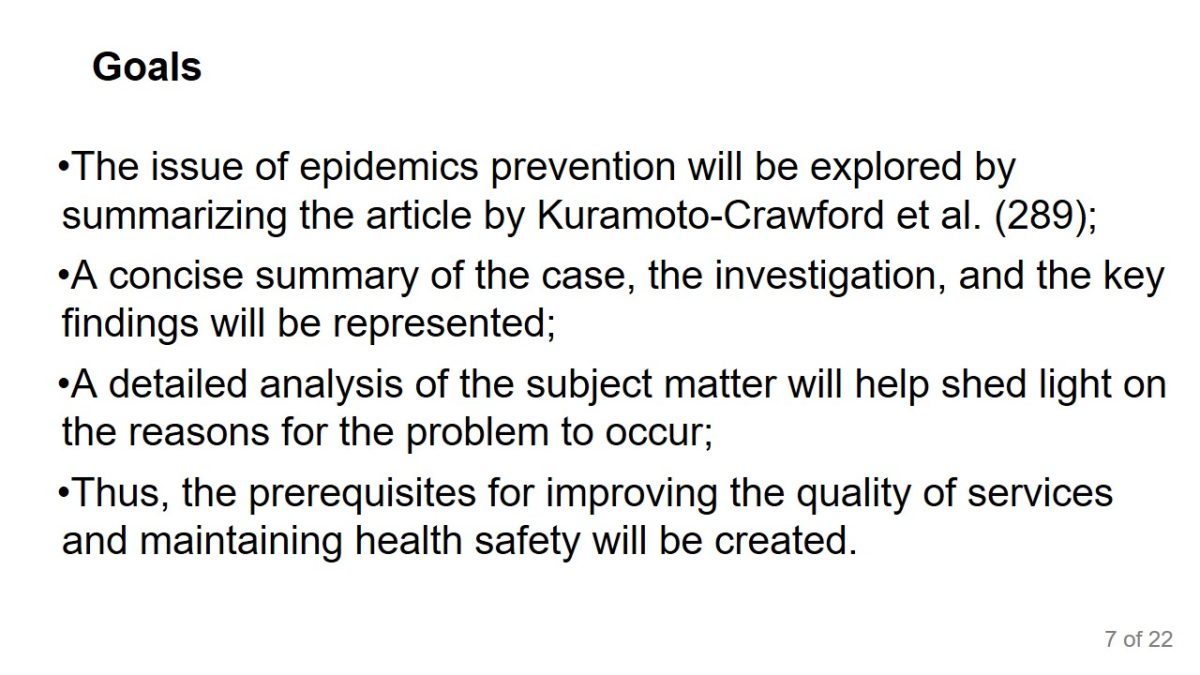
Essential Information
- 9/8/2015: a person developed a severe gastroenterological disorder after dining at a DC restaurant;
- Salmonella group D was the reason for the disease and the pain experienced by them;
- The products containing truffle oil were contaminated with the Salmonella enterica serotype Enteritidis infection;
- Cooperation between healthcare providers, public officials at different levels of influence (from local to state ones), public, and media was required to address the problem.
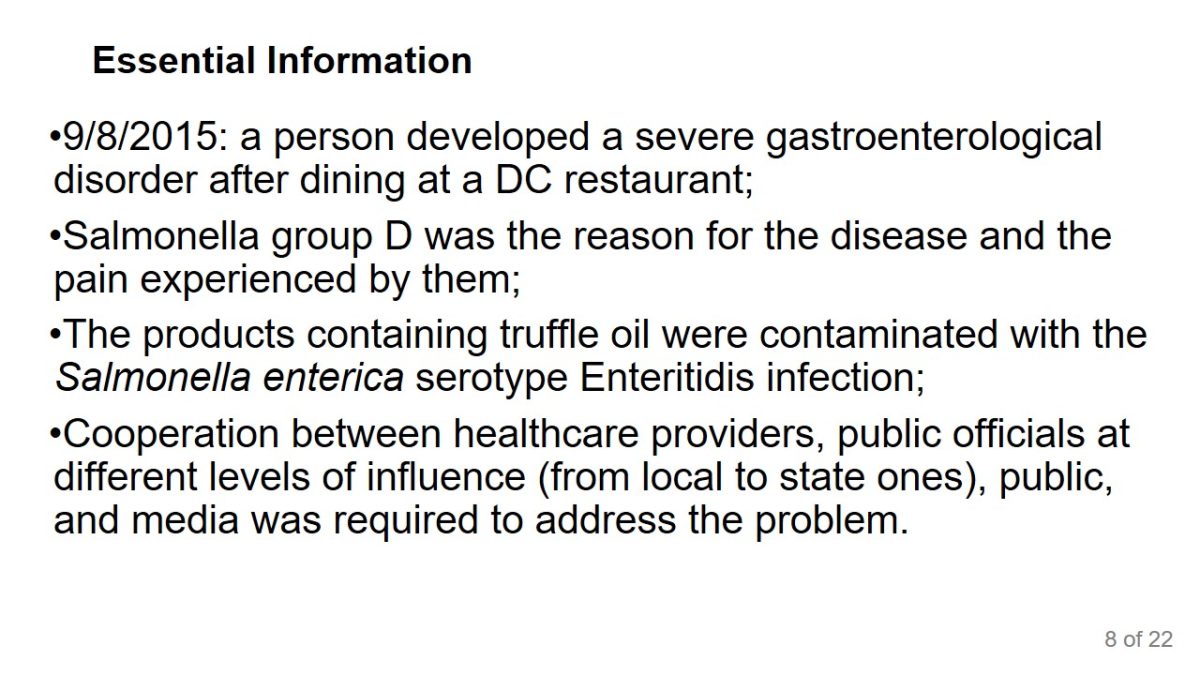
Epidemiologic Investigation: Description
- A case cohort study was designed, and people that had eaten at the restaurant in the following time slot: 7.1.2015–9.1.2015 were recruited for participation;
- Two categories for cases were suggested: confirmed and probable, with control subjects being determined based on DCDOH self-reports;
- 9.9.2015–10.28.2015: 277 people that used the restaurant’s services were identified, of whom 159 (63%) were patients, whereas 95 (37%) were represented by control participants.
- Most of the cases of Salmonella enteric contraction occurred on 8.31.2015-9.10.2015 among the DC citizens, although there were also the residents of 11 states;
- There was no major difference between the control group and the patients;
- The patients reported diarrhea, abdominal cramps, chills, headache, nausea, and fever after dining at restaurant A;
- A detailed analysis and comparison of the food items consumed by 155 patients and 88 representatives of the control group were carried out.
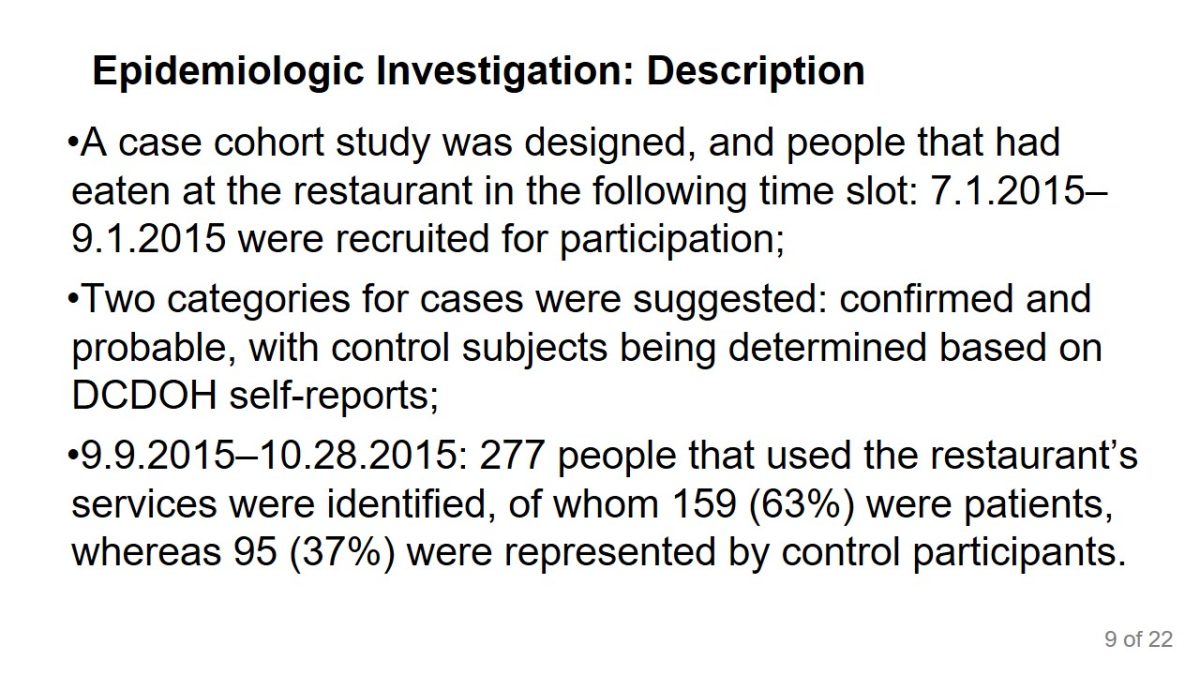
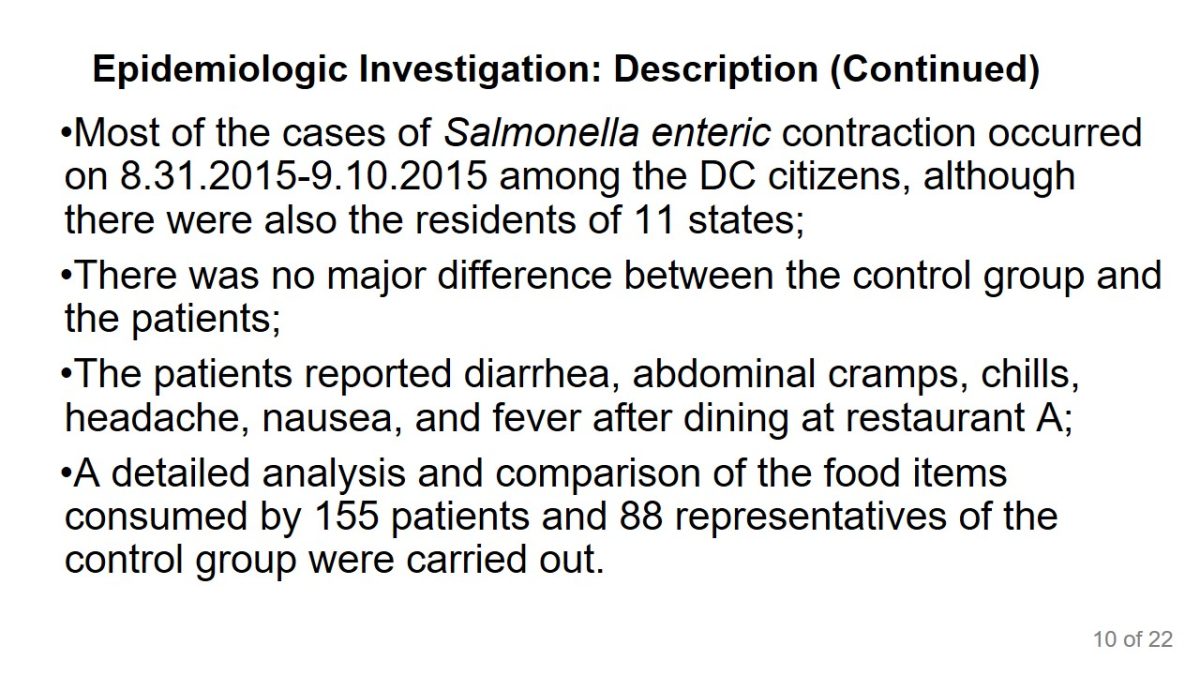
Epidemiologic Investigation: Outcomes
- The food poisoning at Restaurant A led to the contraction of Salmonella enteric and the symptoms such as nausea, fever, etc.;
- After six dishes were isolated, truffle oil was suspected as the primary cause of the problem;
- The further analysis confirmed that truffle oil must have been the food item that contained the Salmonella enteric infection.
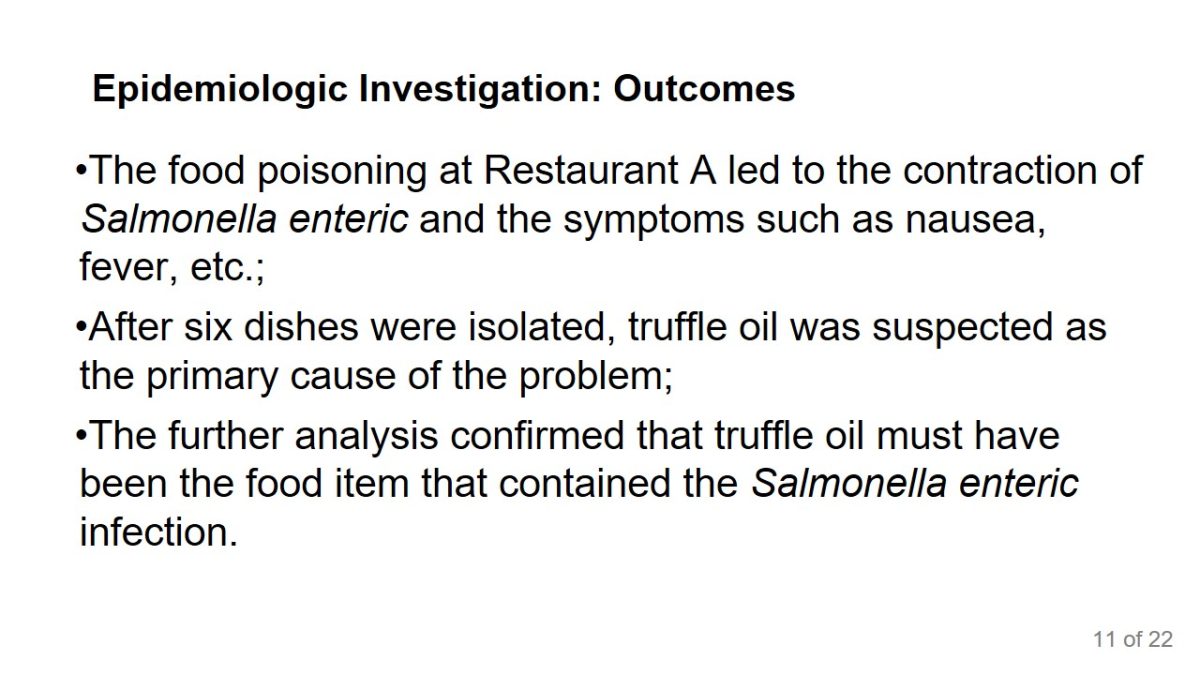
Environmental and Laboratory Investigations: Outcomes
- 9.9.2015: First investigation was conducted at Restaurant A;
- Both truffle fries and raw truffles that were stored at the restaurant kitchen were infected with Salmonella enteric;
- Truffle fries also showed positive results during the test for Salmonella in the course of the polymerase chain reaction (PCR);
- However, the following control tests did not show the presence of Salmonella enteric in the truffle oil samples.
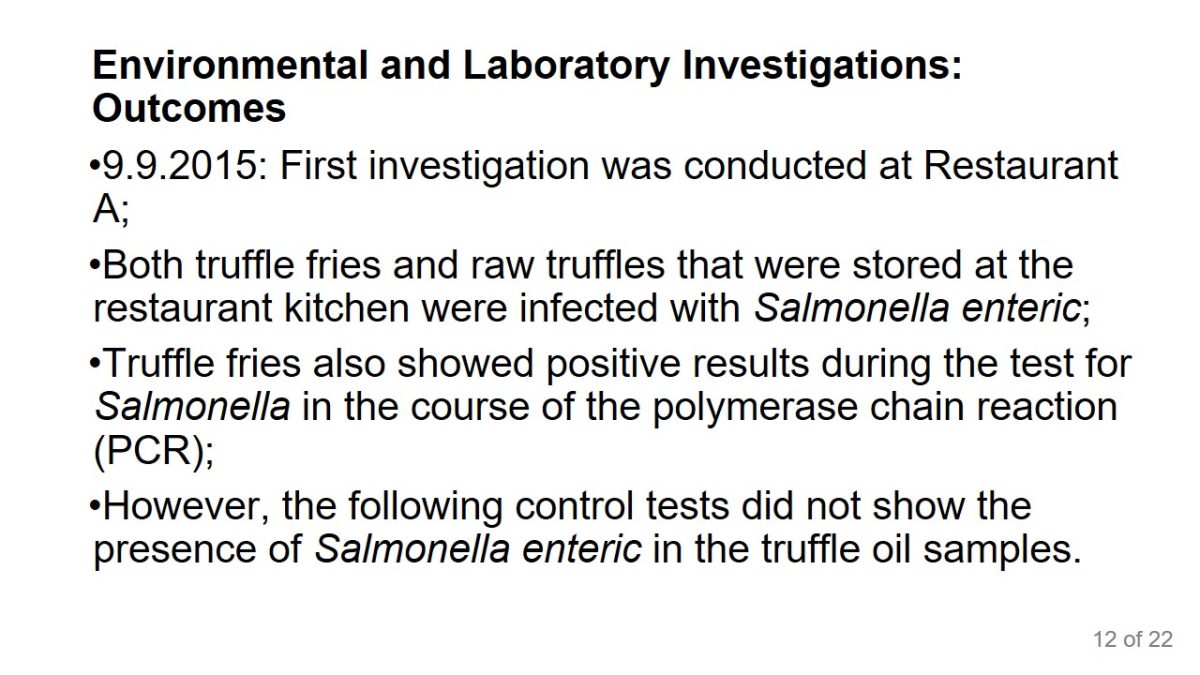
Traceback Investigation: Retrospect
- The rest of the food items returned negative test results for Salmonella enteric (PFGE XbaI pattern JEGX01.0008).
- 9.10.2015: DCDOH placed the issue of epidemic into the spotlight of the public attention;
- Los Angeles County Department of Public Health reported to the DCDOH about similar instances in the Los Angeles restaurant A chain;
- 10.1.2015: FDA and the NY State Department of Agriculture and Markets stated that the suppliers could have been responsible for Salmonella enteric contraction.
- The food items distributed in both restaurants were the same, i.e., mushrooms, croquette mix, and truffles;
- The analysis of the truffle oil samples that were shipped 8.1.2015–9.15.2015 implied the use of the VIDAS Enzyme Linked Fluorescent Assay;
- The analysis showed that the 102 environmental sponge subsamples were not contaminated with any form of Salmonella;
- Similarly, the shipmen records were scrutinized closely in order to detect the possible source of Salmonella enteric.

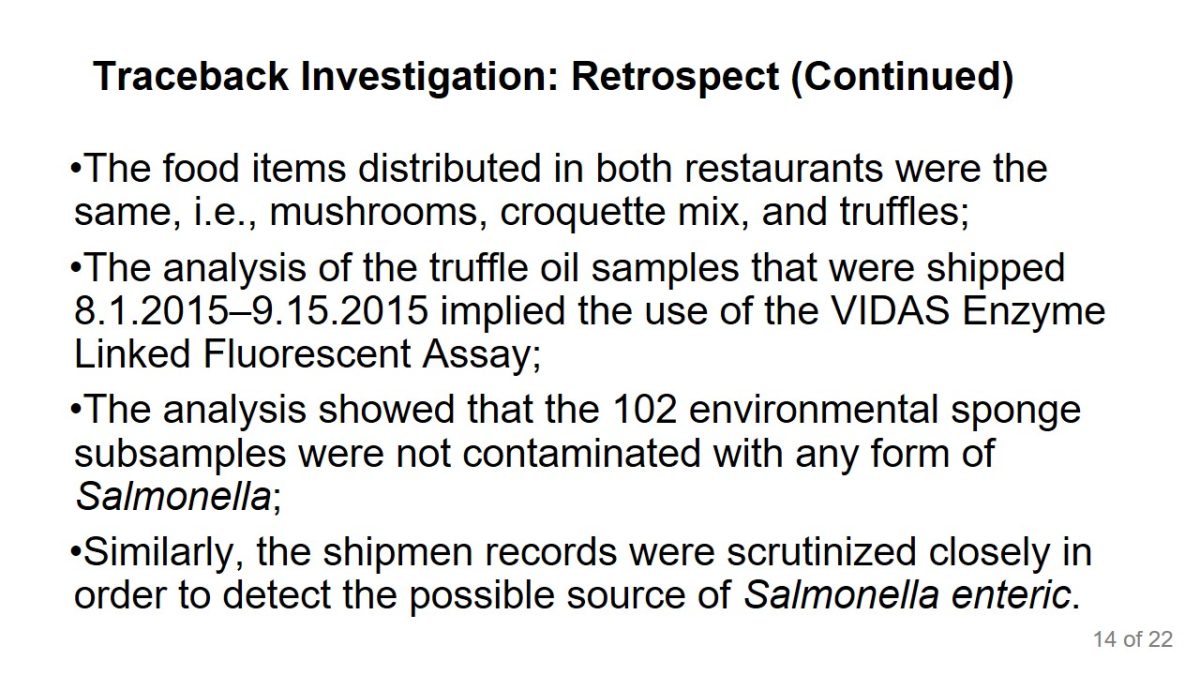
Public Health Response
- Restaurant’s A license was temporarily suspended by DCDOH;
- Restaurant A was instructed to address the violations in the food safety standards that had been spotted during the security check;
- Regular inspections with reports submitted to the corresponding organizations were considered a necessity for Restaurant A to restore its functions and be given its license back.
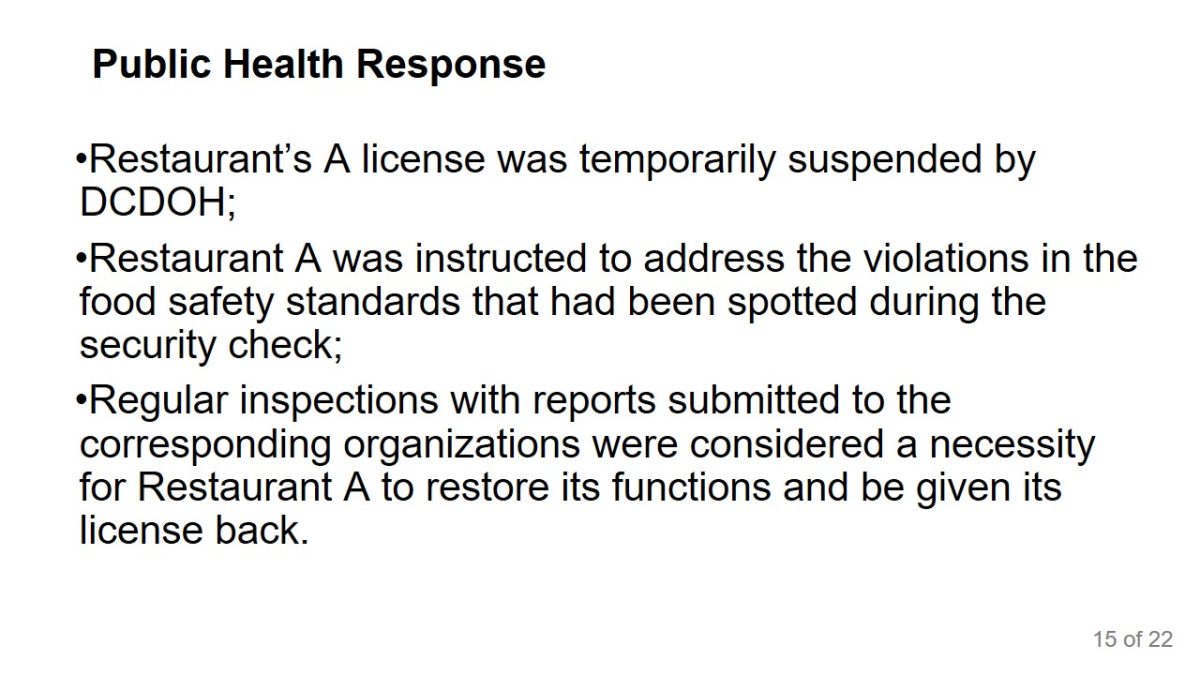
What the Investigation Showed
- Instances of gastroenterological pain were reported among 159 people that had dined at Restaurant A;
- Salmonella enteric is typically found in the food such as poultry, eggs, Turkish pine nuts, yet the current study showed that low-water activity food may also be the source of the infection;
- The analysis based on genome sequencing showed that there were differences between the Salmonella Enteritidis and the pine-nut-related infection.
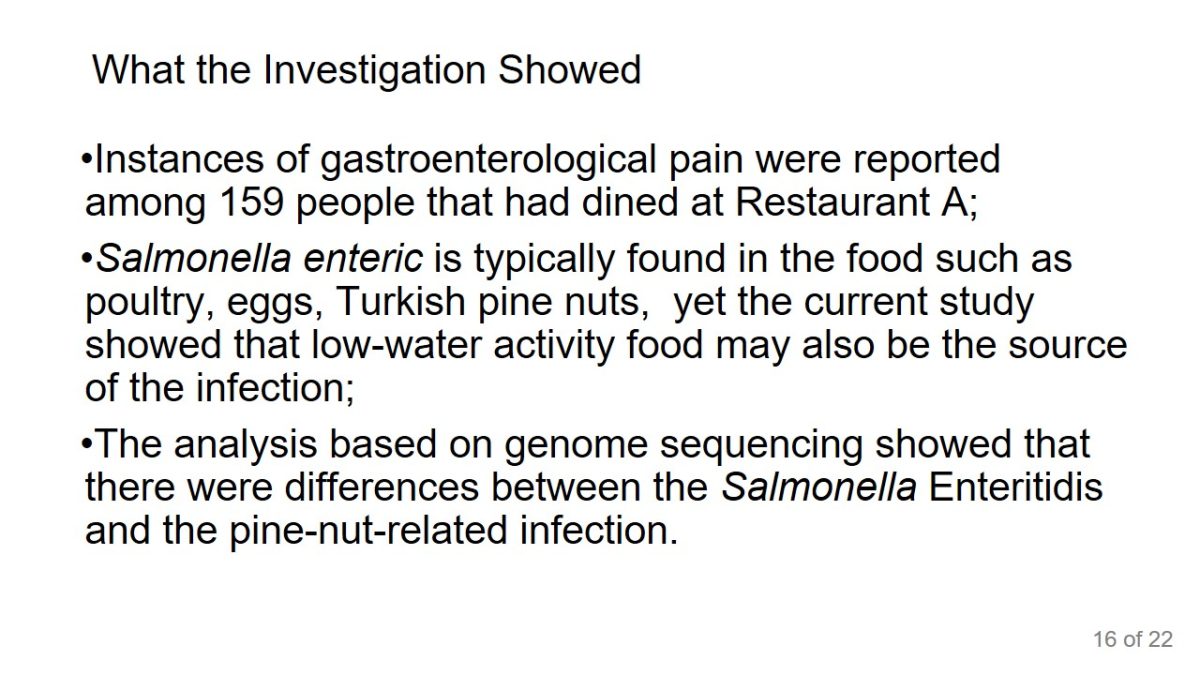
Limitations and What They Entail
- It is rather difficult to identify the single food item that caused the epidemic due to the lack of precision in the analysis;
- Some of the samples were collected after the patients developed the symptoms of Salmonella Enteritidis and, therefore, cannot be viewed as useful for the study;
- There is a possibility of investigation biases that may have affected the accuracy of the results and, therefore, led to a mistake in analysis.
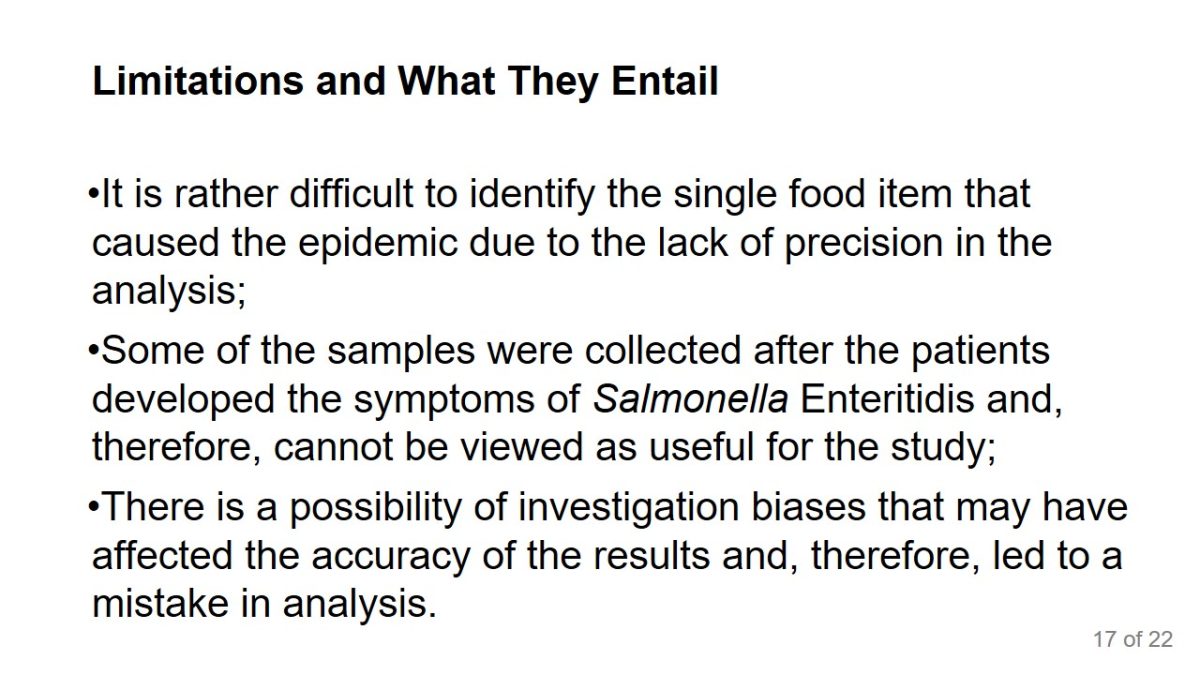
Outcomes of the Study: Addressing the Outbreak
- The fact that the dishes containing truffle oil were the source of Salmonella Enteritidis can be considered proven;
- Therefore, the products and dishes containing truffle oil must be viewed as the most likely source of the Salmonella Enteritidis outbreak in the target population;
- Thus, apart from legal repercussions, Restaurant A’s managers will have to consider implementing the policies aimed at the promotion of essential sanitary rules.
- The restaurant patrons and the emergency department recognized the problem fast and addressed it in a timely manner;
- In the PulseNet database, the PFGE pattern observed in the case is among the most common ones;
- Therefore, a further analysis of the problem is required;
- The importance of cooperation between DCDOH epidemiologists and the DCPHL was crucial for promoting people’s safety.
- Collaboration of all agencies must be promoted. Thus, further aggravation of the issue can be prevented successfully;
- The case, therefore, should be viewed as a prime example of successful epidemic prevention. Moreover, it is the source of general ideas about carrying out public health campaigns;
- The emphasis on promoting cooperation between healthcare services, local authorities, the administration, the citizens, etc., is required.
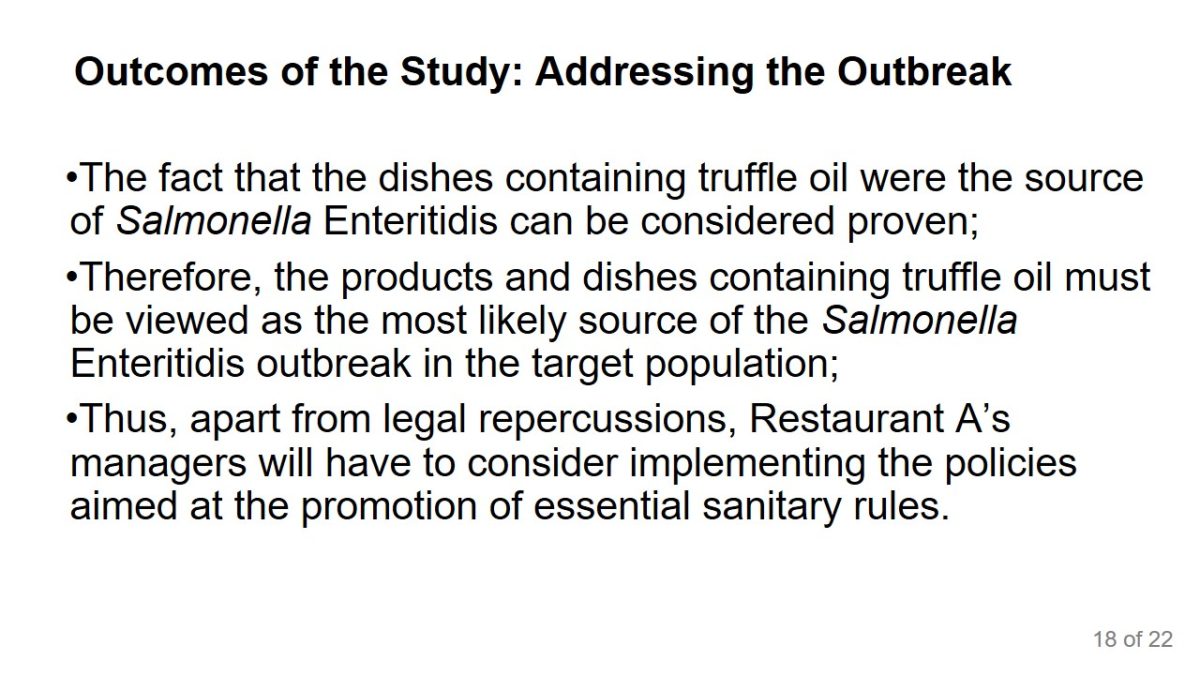
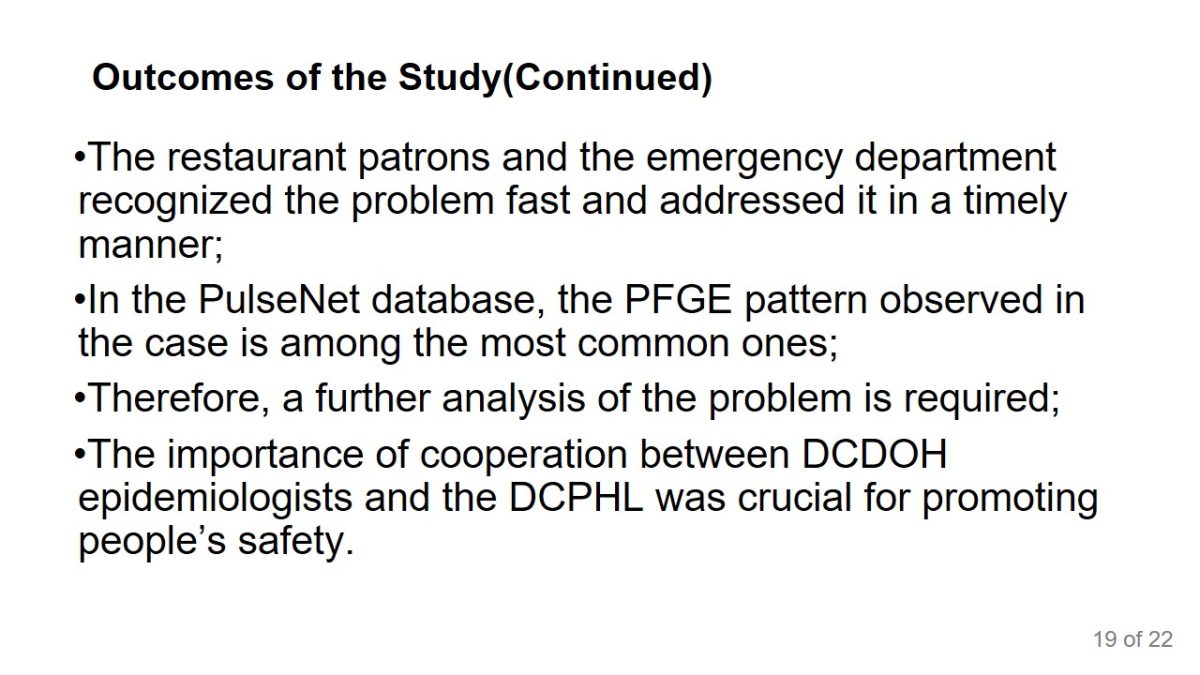
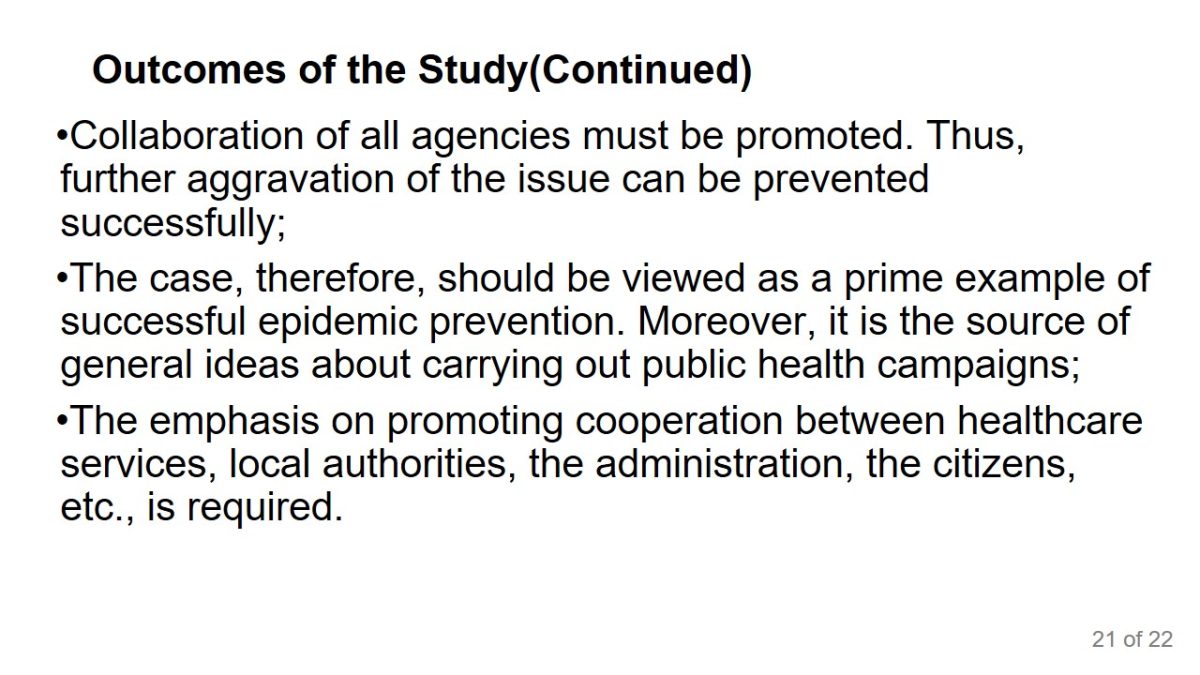
Conclusion
- It is crucial to create the environment in which all stakeholders will be safe;
- Because of the lack of the appropriate quality standards, ethics, and leadership, Restaurant A has nearly caused an outbreak of the Salmonella Enteritidis epidemic;
- A set of more rigid standards for quality checks should be introduced. Thus, the foundation for improving public health and removing the threats to people’s well-being can be created.
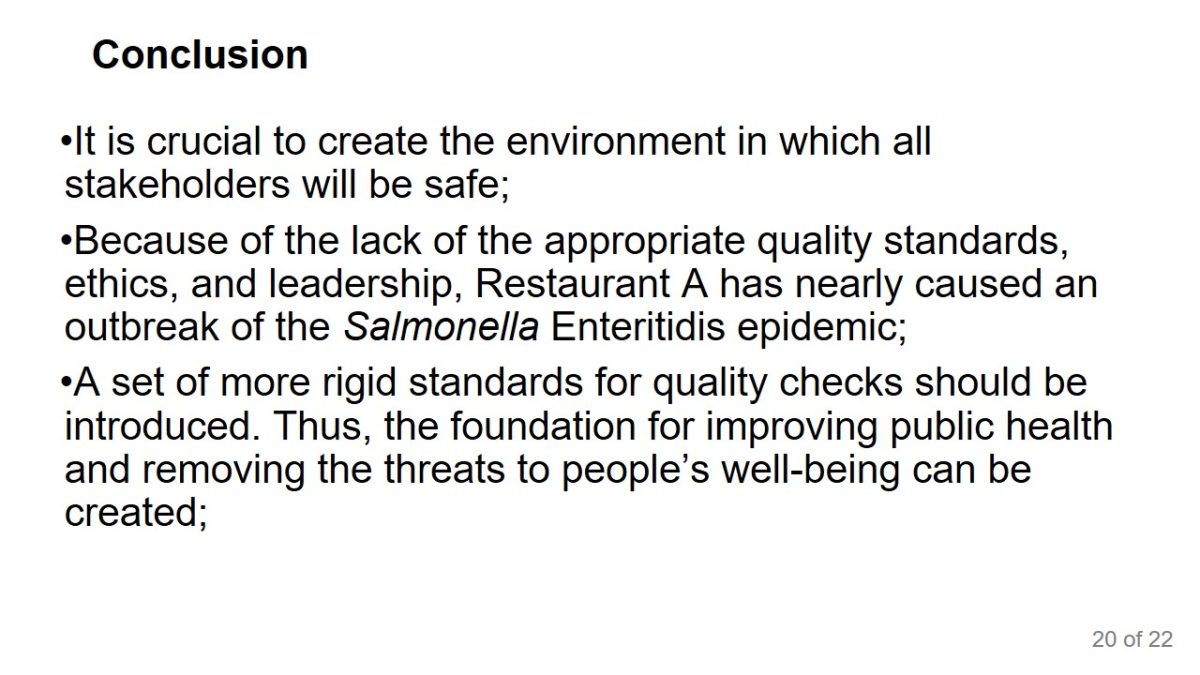
Work Cited
Kuramoto-Crawford, Janet S., et al. “Investigation of Salmonella Enteritidis Outbreak Associated with Truffle Oil – District of Columbia, 2015.” Morbidity and Mortality Weekly Report (MMWR), vol. 66, no. 10, 2017, pp. 278-281.